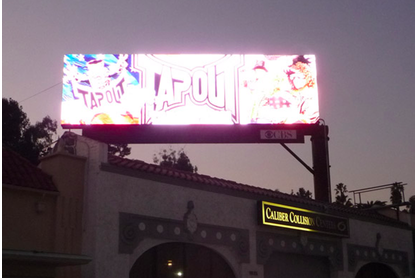CommentsDIGITIZED NEIGHBORHOODS--The most recent meeting of the Planning and Land Use Management Committee of the City Council did not move the ball forward.
Or backward for that matter. Despite record turnout from Neighborhood Councils, the members of the PLUM Committee continue to kick the can down the road, testing our endurance and patience. There is no progress to report, mostly because there is very little leadership on this issue from our elected officials.
What was accomplished? The Planning Dept. staff gave a multi-point report. Much of it was taken up with the matter of discretion, an arcane legal issue that the City needs to resolve in order to minimize future lawsuits over any eventual bill.
Of much greater importance to citizens were the discussions about where to locate digital signs. Several ideas were raised, such as locating them on public property, at select intersections, and in sign districts with less restrictive definitions called Tier 3. All of these options would allow digital signs outside sign districts zoned Regional Commercial, which is the most highly commercialized zoning designation in the City.
Here’s the rub: All 24 Neighborhood Councils that have weighed in on this matter already oppose what PLUM is doing.
The Councils explicitly stated that they favored keeping digital signs only in those restrictive Regional Commercial sign districts. Several Neighborhood Councils sent representatives to the meeting, and they all spoke eloquently in favor of that preferred option. This Sign-District-only option tracks closely with what the City Planning Commission recommended in 2015 for digital signs in its version of the legislation, commonly known as Version B Plus.
The claimed justification for expanding site eligibility for digital signs into Tier 3 and other areas is that doing so would allow for more takedowns of old static signs in wider areas of the city.
But that’s a bogus argument for three reasons:
- Because there are already about a dozen sign districts that meet the Regional Commercial criterion.
- Because the takedowns can already come from anywhere the Council determines.
- If ever they decided to enforce the existing sign law, 960 signs are already out of compliance and could be cited for fines and/or removal.
The most telling moment came near the end of the hearing, when PLUM Committee chair Marqueece Harris-Dawson called on all the other members to speak on the matter. Council Member Bob Blumenfield stated, “Billboards should not go where they are not wanted,” the most welcome breath of fresh air we heard all day. The other members talked aimlessly about “finding balance” and even staging “community workshops” which is completely unnecessary given that so many Neighborhood Councils have already weighed in on this matter which has been pending for, oh, at least 8 years now depending on how you count.
Who is running things here? Nobody. Nobody on the PLUM Committee seems to have any vision of what LA ought to look like, and that is exactly what’s at stake in this legislation. After hearing the reports, the PLUM Committee voted to send the report to the City Planning Commission for its comments, a bureaucratic move. We will be watching to make sure that the Planning Commission stays true to Version B Plus which it proposed in 2015, and which 24 Neighborhood Councils have already endorsed.
Executive Summary: Hold on. Stay in this. Keep watching. Don’t let up. We will report further after the Planning Commission takes yet another stab at this.
Patrick Frank is the President of The Coalition to Ban Billboard Blight. He can be reached at banbillboardblight.org.)
-cw














